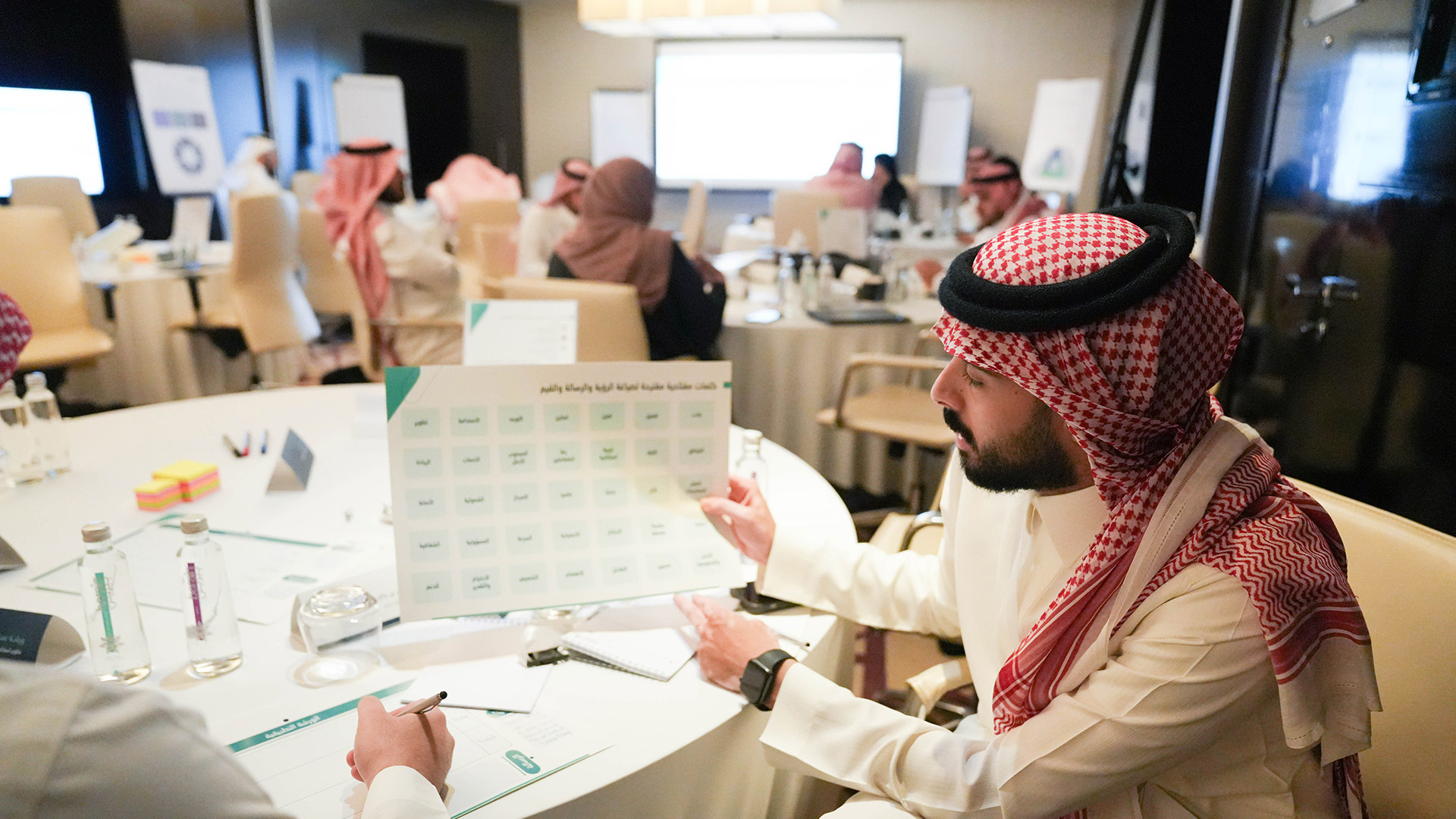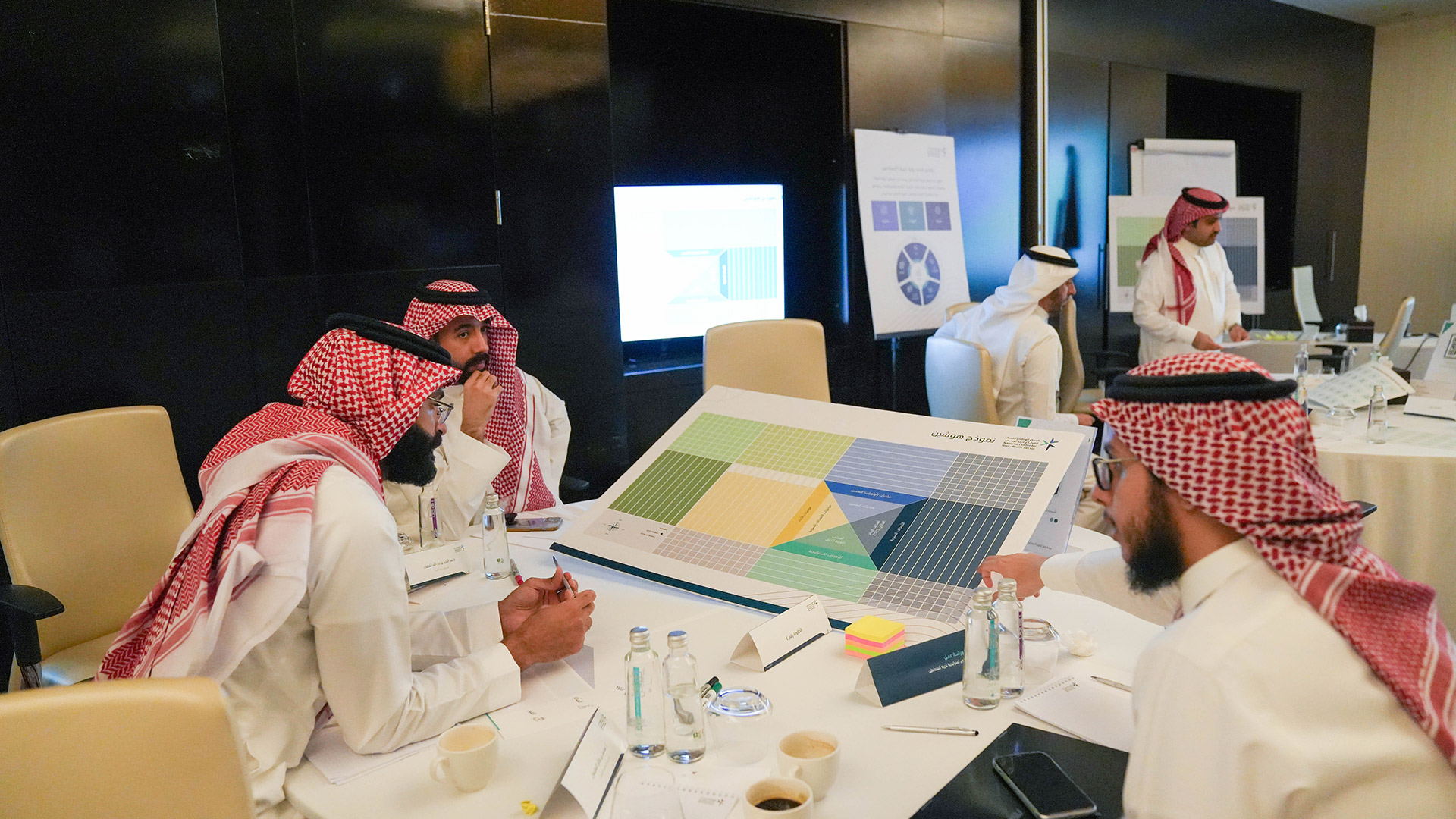SLEIA™
Evidence In • Impact Out
SLEIA™
From Evidence to Impact
Constituent Elements of SLEIA™
01
SLEIA™ Drivers
Translate strategy into action across five streams: economic modeling, PPP appraisal, localization pathways, regulatory/market governance, and social performance, turning priorities into measurable, policy-aligned outcomes.
02
Kaizen D³ Change Model
A continuous, evidence-driven engine that turns strategy into measurable results through rigorous analysis, co-created solutions, pilot-to-scale execution, and feedback loops, guided by KPIs, SROI, and value-for-money monitoring.
03
SLEIA™ Enablers
The analytic and technology stack -economic/competition models, spatial & value-chain analytics, fiscal/PPP toolkits, regulatory/ sandbox suites, and social impact/KPI platforms – powering evidence, monitoring, and scale.
Kaizen D³ Change Model

In the Discover program, we diagnose contexts and quantify baselines using CGE/IO models and stress tests, portfolio IO multipliers, value-chain mapping, and early KPI setup (dashboards, SDG-aligned metrics). This program is executed as follows:
- Scope & Indicator Architecture: Define policy questions and hypotheses; map stakeholders; select models (e.g., CGE/IO, value-chain); design the indicator/KPI set and data plan.
- Data & Baseline Build: Ingest/clean data; construct baselines (SAM/SNA, sectoral and regional); run initial scenarios/stress tests; prototype dashboards and geo-maps.
- Validate & Sensitivity Review: Triangulate results with benchmarks and stakeholders; perform QA, back-testing, and sensitivity/distributional analyses; document assumptions and data lineage.
- Prioritize & Mobilize: Convert findings into a prioritized issues/opportunities list; refine hypotheses and models; issue a baseline pack (dashboards, KPI dictionary, risk register) and hand off to Design.
In the Design program, we co-create and test policy and investment options: PPP/PSC and VfM structures; competition remedies using HHI/elasticities/merger simulations; sandbox scope and protocols; and legal drafting redlines with burden testing, validating options with stakeholders before institutionalization. This program is executed as follows:
- Option Architecture & Co-Design: Define outcomes, constraints, and options with stakeholders; set success criteria. For PPPs, frame PSC/VfM tests; for competition, frame counterfactuals and potential remedies; for sandboxes, set scope, entry/exit, and success metrics; for drafting, agree clarity/enforceability/burden criteria; align sector/regional designs with Vision 2030 KPIs.
- Prototype & Structuring: PSC benchmarks and risk-allocation term sheets; run merger simulations and elasticity models; draft sandbox protocols and monitoring dashboards; produce redlines and compliance-burden estimates; assemble portfolio/regional models (IO/GIS) to visualize distributional effects.
- VfM & Compliance Validation: Test affordability/fiscal sustainability and lifecycle VfM; validate competition outcomes and remedies; perform sandbox midline/final evaluations; QA legal drafts against standards and verify enforcement-readiness; use risk/sensitivity matrices and stakeholder validation (Istitlaa/RIA) to compare options.
- Decision Pack & Institutionalization: Issue decision memos and implementation roadmaps; finalize redlines and standards updates; publish sandbox policy notes; deploy monitoring toolkits/dashboards; sequence regional/sector pipelines for scaling.
In the Deliver program, we pilot and scale: establish baselines; implement initiatives; monitor performance with dynamic dashboards, SROI/KPI tracking, and VfM toolkits; run midline/endline evaluations; then review and expand what works for durable, evidence-based transformation. This program is executed as follows:
- Mobilize & Baseline: Stand up delivery governance, risks, and workplan; establish measurable baselines and KPI dashboards aligned to Vision 2030 for clear “start lines.”
- Pilot & Enable: Run controlled pilots and early rollouts using BI dashboards; build team capability through training to ensure on-the-ground readiness.
- Measure & Evaluate: Monitor delivery with dynamic KPIs; evaluate financial/social returns (NPV, IRR, SROI); conduct midline/endline reviews and synthesize lessons.
- Scale & Institutionalize: Review against SDG/SIA checks; scale successful solutions, update standards/policies, and deploy monitoring toolkits for sustained value-for-money.
SLEIA™ Drivers

1. Scenario & Economic Modeling
Build economy-wide and sector models; set baselines vs. counterfactuals; apply stress-tests; quantify direct/indirect/induced effects; align sector-regional outcomes to KPIs.
2. Investment & PPP Appraisal
3. Localization & Value-Chain Structuring
4. Regulatory & Market Governance
5. Social Impact & Performance
SLEIA™ Enablers

1. Economic & Competition Modeling Stack
2. Spatial, Value-Chain & Localization Analytics
3. Fiscal, PPP & Impact Appraisal Toolkits
4. Regulatory Quality & Sandbox Execution Suite
5. Social Impact & Performance Platforms
How SLEIA™ Works?
SLEIA™ Success Model in Steps
Phase 1 — Mobilize & Architecture
-
- Goal: Set the governance, operating model, and the tech foundation (EcoKaizen™, data pipelines, dashboards).
- Scope: Define roles/decision rights, align SLEIA™ Drivers/Enablers to objectives; confirm indicators/KPI taxonomy, establish data stewardship, risk register, privacy/compliance, and configure Impact Assessment Technologies.
- Exit gate: Mobilization charter approved, KPI dictionary, data governance policy active, and EcoKaizen™/dashboards configured and validated.
Phase 2 — Discover
-
- Goal: Build baselines and evidence to prioritize opportunities and risks.
- Scope: Ingest/clean data; construct economic/social baselines (CGE/IO/SAM, labor metrics), run scenarios/stress tests, value-chain and localization scans, proto dashboards and geo-maps, and initial SROI/VfM lenses.
- Exit gate: “Baseline Pack” (methods, assumptions, dashboards), prioritized issues/opportunities list, and readiness note for Design.
Phase 3 — Design
- Goal: Co-create viable, de-risked options and delivery structures.
- Scope: Option architecture with stakeholders, PPP/PSC & VfM structures, competition remedies (HHI/elasticities/merger sims), sandbox scope and protocols, drafting redlines and compliance-burden estimates, and distributional/region impacts.
- Exit gate: Signed decision memo; implementation roadmap, risk & benefits registers, and monitoring plan (KPIs/SROI/VfM) agreed.
Phase 4 — Deliver (Pilot)
-
- Goal: Prove value in controlled environments and build delivery capability.
- Scope: Launch pilots, enable teams, operate dashboards, manage risks/issues, midline evaluation, training and SOPs, and iterate using EcoKaizen™ scenarios and sensitivity tests.
- Exit gate: Midline report, performance thresholds met (or adjusted), and go/no-go for scale with signed change requests.
Phase 5 — Scale & Institutionalize
-
- Goal: Roll out successful designs and embed standards across units/regions.
- Scope: Sequenced rollout plan, benefits realization management, updates to policies/standards, funding and incentives, handbooks/playbooks, and service-levels & accountability.
- Exit gate: Target coverage achieved, benefits tracking live, updated standards published, and ownership transitioned to line functions.
Phase 6 — Continuous Improvement & Benefits
-
- Goal: Sustain outcomes through PDCA/D³ rhythms, recalibration, and transparent reporting.
- Scope: Quarterly performance reviews, model/version control, assumption refresh, SROI/VfM/KPI audits, lessons learned into playbooks, and capability building & coaching.
- Exit gate: Recurring “Performance & Learning Pack” issued, actions closed, and next-cycle priorities confirmed (methodology loop continues).